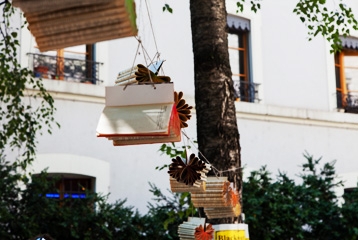Formerly a vast expanse of fields, Pâquis Sécheron has gradually attracted luxury hotels, cabarets and artists.
Development of the district: from meadows to luxury hotels
Les Pâquis were originally pasture land stretching all the way to the lake. They were located outside the city walls in the former municipality of le Petit-Saconnex. When the first buildings were erected along the present-day rue de Lausanne, the inhabitants continued to graze their cows, horses, donkeys, goats and sheep by the lake shore.
The district was transformed during the 19th century. The little port of le Fossé Vert was replaced by the Place des Alpes and its eponymous gardens. Elegant carriages replaced the cows by the lake shore. The pasture land gave way to attractive houses surrounded by gardens and luxury hotels.
Nevertheless, the City of Geneva was becoming cramped and began growing beyond its ramparts. The region between the station and the lake developed with streets meeting at right angles and Pâquis Sécheron became a “modern” district.
From the beginning of the 20th century, bistros, cabarets, music halls, brothels then hotels used for the same purpose proliferated in the north of les Pâquis. Vibrant areas and luxury buildings now stood almost side by side.
What do “Pâquis” and “Sécheron” mean?
The terms “Pâquis” and “Sécheron” both recall the former role of the district where people brought their livestock to graze. The word “pâquis” designates the place where game would come to feed and, by extension, all pasture land. It is a cross between “pâtis”, or land that is not farmed but used to graze livestock, and “pasquier” from the Latin “pascuarium”, or pasture.
The term “Sécheron” comes from the local dialect and means “sloping meadow”.
Les Pâquis, a source of artistic inspiration
Numerous artists have been inspired by a stay in les Pâquis:
- In 1842, the French painter, Jean-Baptiste Camille Corot, produced an oil on canvas entitled “The Quai des Pâquis in Geneva”. This work can be seen in the Museum of Art and History;
- During his childhood, Jean-Jacques Rousseau would spend his Sundays in les Pâquis, in the workshop of one of his uncles. He recalls memories of this period in his Reveries of a Solitary Walker;
- Towards the end of his life, the painter, Ferdinand Hodler, resided in a building on the Quai du Mont-Blanc. From his window, he painted his very last landscapes: the bay with its swans and the Alpine peaks in the distance;
- The famous French writer, Chateaubriand, stayed on the Place de la Navigation in 1831. Not far from there, a street and square bear his name;
- In the 19th century, the Genevan writer, Henri-Frédéric Amiel, paid homage to les Pâquis in verse: “Les Pâquis, plantureux quartiers / Où fleurit, parmi les chantiers, / Notre Bohème, / Beaux lieux, englobés par l'Octroi, / Mais où, de nuit, rentrer chez soi / Est un problème”.
Source:
Roland Hippenmeyer, Les Pâquis: souvenirs et anecdotes, Yens sur Morges, 1994.
Article modifié le 16.02.2021 à 16:48

